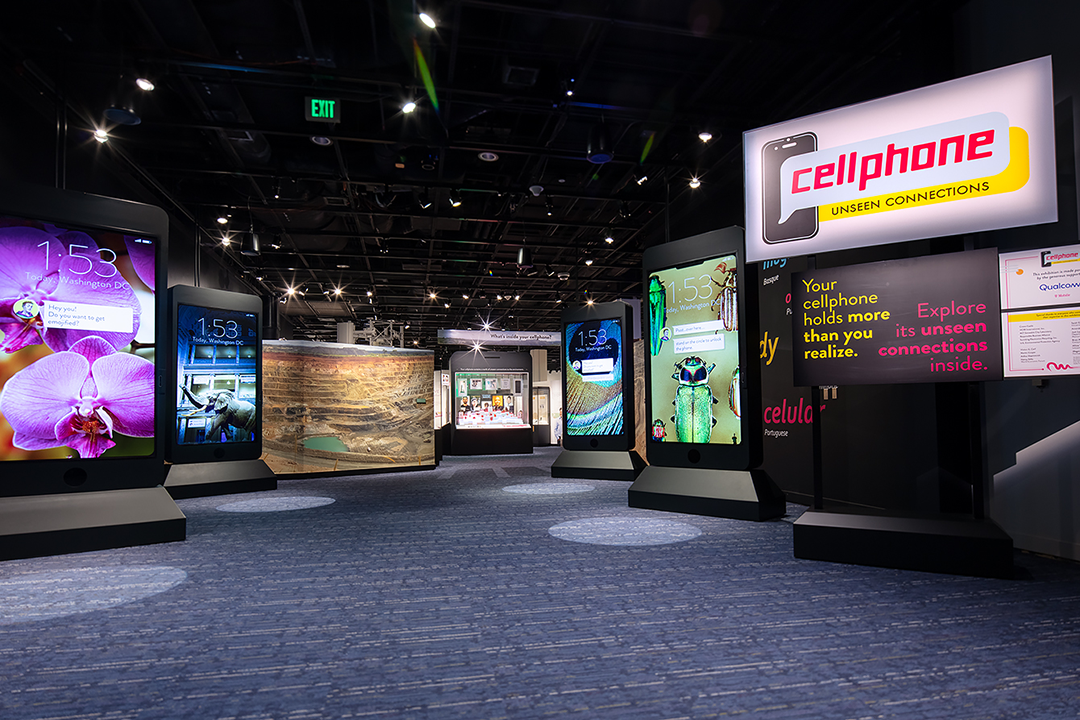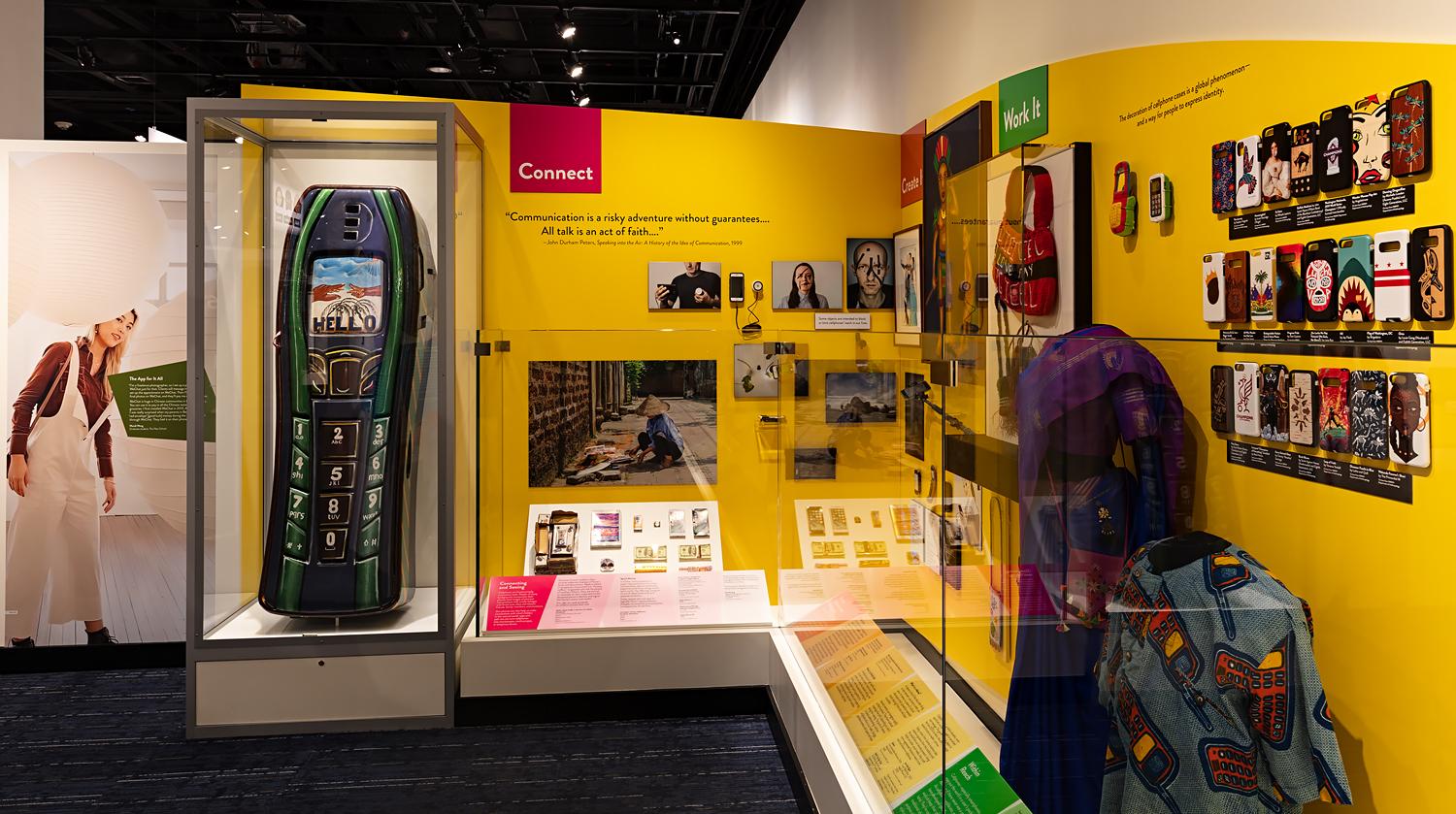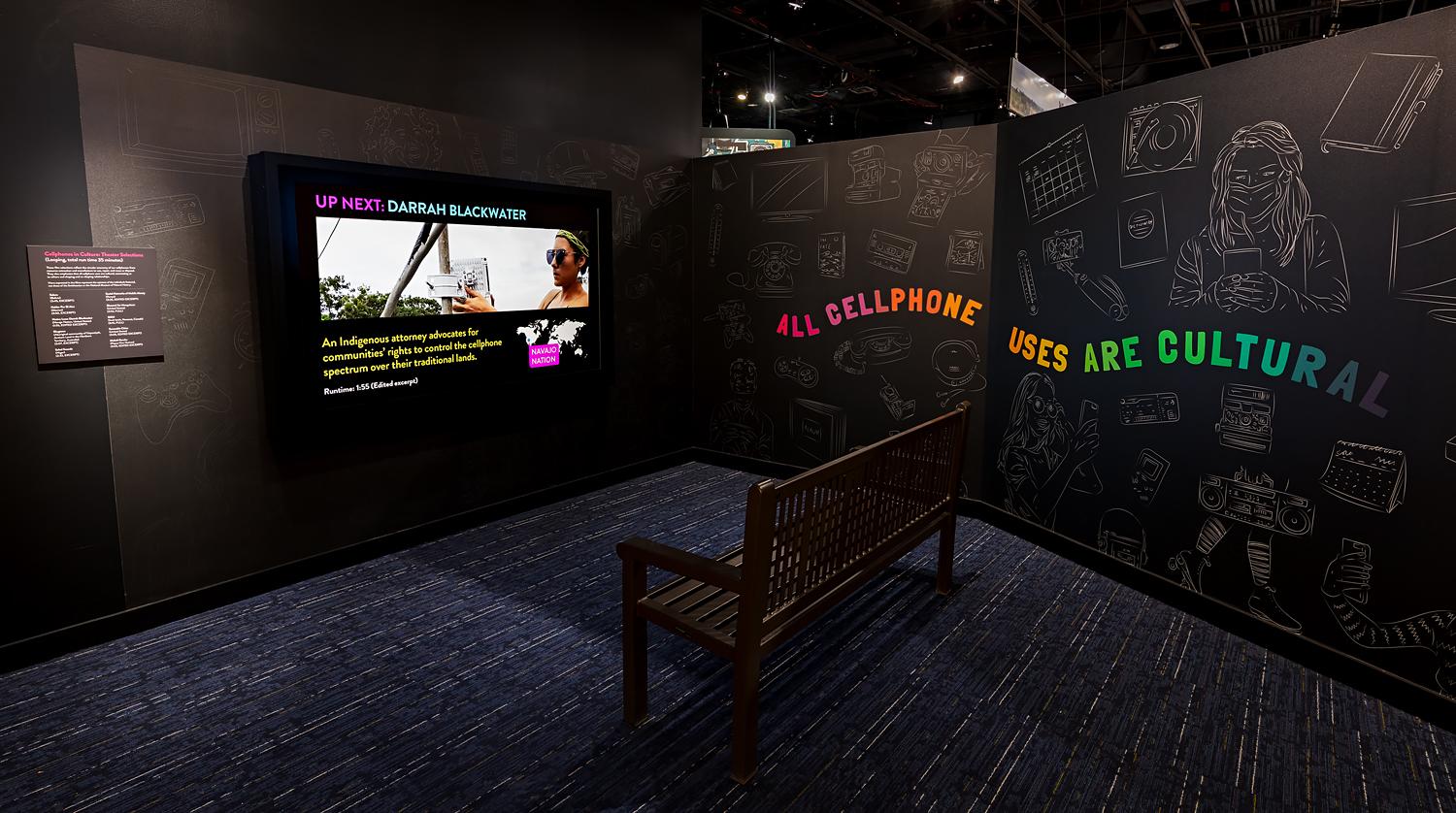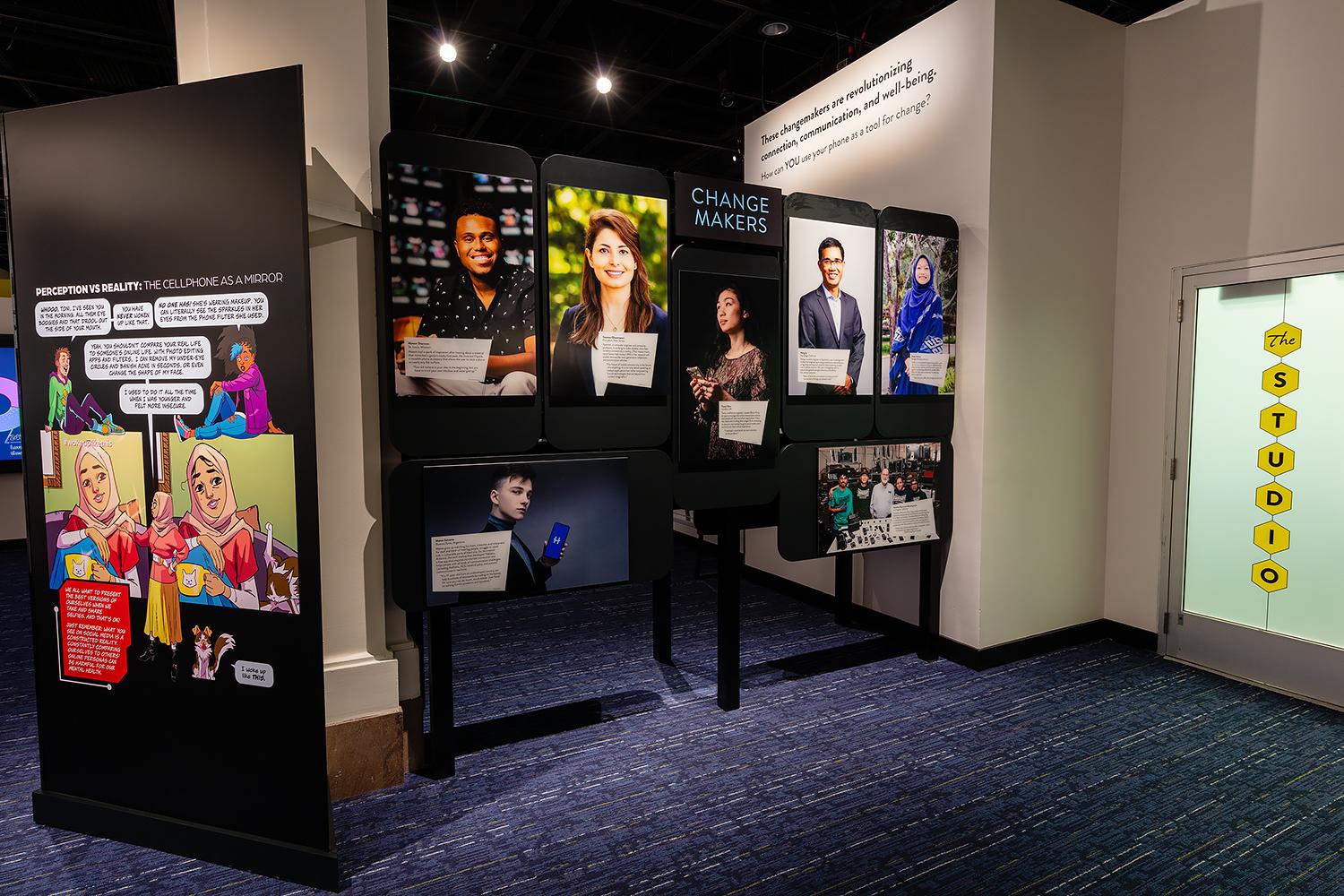It’s the fastest growing technology in human history, one that’s reshaped industries, connected people around the world and transformed the way we express ourselves.
And nearly all of us carry it in our pockets.
It’s the cellphone—a device so prevalent in society that there are more of them in circulation than there are people on the planet.
And now the “technology that everyone loves to hate and hates to love,” as Professional Lecturer in Anthropology Joshua A. Bell put it, is the subject of a new exhibition at the Smithsonian’s National Museum of Natural History, which is informed by collaborative research with George Washington University scholars and students.
Curated by Bell, who also serves at the museum’s curator of globalization, “Cellphone: Unseen Connections” opens June 23 and will run for at least three years. It traces the technological, environmental and cultural impacts of the cellphone—while telling the global story of how it evolved from a bulky brick-like eyesore to a sleek razor-thin fashion statement. The exhibition features interactive displays, including a cellphone repair game, and hundreds of objects such as minerals, undersea cables, phone cases decorated with Indigenous art and even a 6-foot-tall fantasy coffin crafted by a Ghanaian artist to resemble a cellphone.
“We’re telling a human story about how we connect to each other, to technology and to the rest of the world—all through this object that most of us can’t live without,” Bell said.
Building on longstanding partnerships between the Smithsonian and GW, the exhibition is partly influenced by more than 10 years of research efforts by GW professors and students.
Along with Bell, Alexander Dent and Joel Kuipers—both professors of anthropology and international affairs at the Columbian College of Arts and Sciences and the Elliott School of International Affairs—have spearheaded cellphone scholarship with initiatives like the Cellular Connections Project, a National Science Foundation-funded project that evaluated the effects of cellular technology on Washington, D.C., teens. Collectively, their work has received more than $500,000 in grants from the Smithsonian, GW and the Wenner Gren Foundation, and involved research that helped inform the Smithsonian exhibit. The funding fostered an ongoing collaboration between GW and the National Museum of Natural History, Bell said.
“Technological transformations have characterized each historical period—and, for us, the cellphone is the fundamental technological intervention of our time,” Dent said.
Much of their data has been processed at the GW Discourse Laboratory, which was developed by Kuipers in 1997 and serves as a base of operations for GW’s cellphone-related studies. As many as 100 students—GW undergraduate, graduate and Ph.D. students as well as D.C. area high school students—also made critical contributions to the longterm research, from collecting cellphone data to developing teaching strategies to working directly with Bell on designing the Smithsonian exhibit. Among them, Nicole Merullo, BA ’18, now a clinical research coordinator at Tufts Medical Center, spent two years observing cellphone use in D.C. classrooms and interviewing teenagers and parents about their attitudes toward their cellphones. “I really learned what it was like to be an anthropologist in the field—when to be both the quiet, invisible presence, and when to become part of the group,” she said.
As a research assistant with Bell’s exhibit team, Sarah Richardson, PhD ’23, said she gained hands-on experience with behind-the-scenes museum work—from licensing artwork and obtaining display items to researching cellphone components. “I was welcomed onto a highly skilled team where my input has been valued, and the work has been consistently interesting and rewarding,” said Richardson, now the owner of an editing and research service that contracts with the Smithsonian.
“This has been a synergistic opportunity—in terms of our research partnerships and in terms of giving students a chance to really engage in natural history,” Bell said.
Changemakers and witnesses
For the researchers, examining the cellphone’s prominence in society meant acknowledging its role as an indispensable tool for millions—while nodding to trade-offs like privacy invasions, worries over its toll on physical and emotional health and concerns about its ecological impact. “On the one hand, [cellphones] are deeply personal and interactive devices,” Kuipers said. “But they are also deeply global.”
While the Smithsonian exhibition is designed as “a non-judgmental space for critical conversations that also inform people,” Bell emphasized it also doesn’t shy away from controversial topics. Its centerpiece display addresses conflict-mineral mining and features specimens from around the world to represent the 65 elements that comprise standard cellphones.
Likewise, a large-scale comic book-style mural examines the social effects of cellphones. It tells the story of four fictional characters in Washington, D.C., and their experiences with cellphones—portraying the freedom of social media expression along with the anguish of doom scrolling.
Sections on the “cellphone as witness” highlight the technology’s role in documenting human rights abuses and spearheading movements like the Arab Spring, Black Lives Matter and the Ukrainian resistance—while also being used to spread misinformation and circulate images of violence.
Among the 750 objects on display is a 1983 Motorola DynaTAC 8000x, the first handheld mobile cellular phone which weighed nearly 2 pounds and took 10 hours to charge. In an interactive lab space, visitors can reconstruct an “exploded cellphone,” an activity that builds on collaborative GW-Smithsonian research on cellphone repair in D.C.
One of Bell’s favorite exhibits features 33 personal profiles of people from around the world who use cellphone technology to address issues such as health disparities and environmental and social justice. They include artisanal miners in the Democratic Republic of Congo, a young woman who campaigned for a hijab emoji and Native American students utilizing speech apps to revitalize their traditional language. “With these personal profiles, we wanted to create a space in the museum where people can see themselves and maybe even be inspired,” Bell said.
The exhibition is designed to host field trips and after-school programs, and Bell is planning a spring course at GW around it. Meanwhile, Dent predicted it will springboard future cellphone-related research—including the group’s own studies on the links between cellphones and social inequality.
Bell hopes visitors will walk away from the exhibition with a greater understanding of how technology impacts their lives, cultures and communities. “One the goals of the show is to help people realize that technology is an important dynamic of what it means to be human in the 21st century,” he said. “There’s a generation that has never known a world without touchscreens. This is a chance to empower them to fully explore their potential.”








